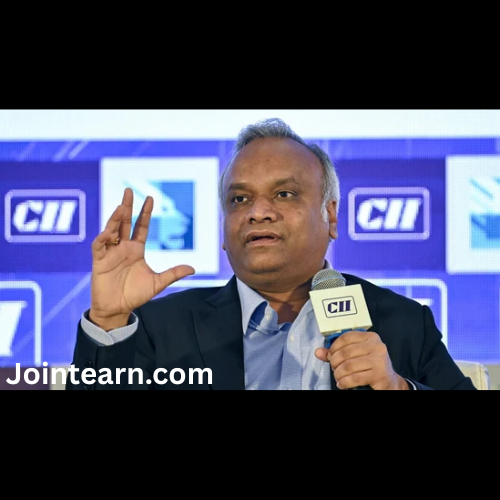The Supreme Court of India has taken a strong stance against the inhuman practice of manual scavenging, issuing a landmark directive that mandates all states and Union Territories (UTs) to disburse compensation for deaths caused while cleaning sewers and septic tanks within three weeks of the incident. This judgment, delivered on Wednesday by a bench comprising Justices Aravind Kumar and NV Anjaria, comes in the context of long-standing concerns about the safety and dignity of sanitation workers in India, and the repeated failure of authorities to effectively implement legislation designed to protect them.
The court’s order comes during a monitoring session on the implementation of directions issued on October 20, 2023, which had required all states and UTs to take comprehensive measures to eliminate the practice of manual scavenging. Despite laws such as the Employment of Manual Scavengers and Construction of Dry Latrines (Prohibition) Act, 1993, and the Prohibition of Employment as Manual Scavengers and their Rehabilitation Act, 2013, manual scavenging continues in violation of human rights.
Compensation for Deaths
One of the central aspects of the Supreme Court’s latest judgment is the increase in compensation for deaths caused while cleaning sewers or septic tanks. The court enhanced the amount payable to the families of deceased workers from ₹10 lakh (the figure applicable since 1993) to ₹30 lakh. However, the judgment did not explicitly state whether the increased compensation applies retrospectively to deaths that have already occurred.
Pending clarification on this issue, the bench emphasized that there is no reason why states and UTs should not immediately pay at least the ₹10 lakh minimum compensation for such deaths. The court stipulated that the amount must be disbursed within three weeks, and warned that failure to comply would require the concerned secretary of the Public Works Department to personally appear before the court.
In addition, the Supreme Court outlined clear guidelines for cases involving disabilities suffered by sewer workers. For workers who suffer disabilities as a result of manual scavenging, the state or UT is liable to pay a minimum of ₹10 lakh, while permanent disabilities warrant a compensation of at least ₹20 lakh.
Rehabilitation and Support for Victims’ Families
Beyond monetary compensation, the court stressed the importance of rehabilitation measures for the victims and their families. These include providing educational scholarships to children of deceased workers and skill development training for family members, to help them achieve financial independence and social mobility.
The directions are part of a broader effort to ensure the enforcement of legal protections, as highlighted in a public interest litigation (PIL) filed by Balram Singh. The PIL had sought proper implementation of the Employment of Manual Scavengers Act, 1993, and the 2013 Prohibition Act, noting that despite the legal framework, enforcement remained largely on paper.
State and Central Responsibilities
The Supreme Court directed the Union Government to issue instructions to all statutory bodies under its control—including municipal corporations, railways, cantonments, and other agencies—to ensure the complete eradication of manual sewer cleaning in a phased manner. The judgment underscores that no state or UT can continue to rely on inadequate enforcement or bureaucratic loopholes to avoid compensating victims or rehabilitating their families.
Scope and Scale of the Issue
The judgment also cited alarming statistics highlighting the human cost of manual scavenging. According to government data presented in the Lok Sabha in July 2022, at least 347 people died while cleaning sewers and septic tanks in the five years preceding the data collection. Uttar Pradesh, Tamil Nadu, and Delhi together accounted for 40% of these deaths, reflecting a disproportionate burden on sanitation workers in certain regions. These figures demonstrate the urgency of immediate compensation and safety measures to protect workers engaged in such hazardous tasks.
Legal Context and Enforcement Challenges
Despite the existence of two major laws prohibiting manual scavenging, implementation has been weak. The 1993 Employment of Manual Scavengers Act criminalized the practice and mandated measures for rehabilitation, while the 2013 Act reinforced these provisions, explicitly banning the employment of individuals in manual sewer cleaning and obligating governments to ensure safe alternatives. Yet, reports from various states reveal continued reliance on manual labor for cleaning septic tanks and sewers, often without proper safety equipment, medical supervision, or legal safeguards.
Senior advocate K Parameshwar, acting as amicus curiae in the case, assisted the court in reviewing the legal framework and the implementation status across states. His input helped the bench determine both the quantum of compensation and the urgent timelines for disbursement.
Immediate Implications
The Supreme Court’s judgment carries several immediate implications:
- Mandatory Disbursement: States and UTs must disburse compensation within three weeks for any deaths occurring while cleaning sewers or septic tanks.
- Minimum Compensation: At least ₹10 lakh for deaths, with the potential for up to ₹30 lakh in accordance with the court’s order.
- Disability Compensation: Workers who suffer permanent disability are entitled to ₹20 lakh, while non-permanent disabilities merit ₹10 lakh.
- Rehabilitation Measures: Victims’ families are entitled to educational scholarships, skill development programs, and other social support measures.
- Enforcement Accountability: The concerned Public Works Department secretary will be required to appear before the court if payments are not made on time.
The Path Ahead
This judgment represents a decisive step toward ending the centuries-old practice of manual scavenging in India, which remains a grave violation of human dignity and labor rights. By specifying compensation amounts, timelines, and rehabilitation measures, the Supreme Court has provided a robust framework for states and UTs to follow.
However, enforcement remains a challenge. Many states have historically failed to track deaths and injuries related to manual scavenging, resulting in delayed or absent compensation. This judgment places the onus squarely on state authorities to act promptly, thereby making it legally and morally imperative to protect sanitation workers.
The Supreme Court’s proactive monitoring underscores the judiciary’s commitment to eradicating manual scavenging while ensuring that victims and their families are supported both financially and socially. The directive also signals that states and UTs cannot continue to defer responsibility under the guise of administrative or bureaucratic hurdles.
The judgment highlights the urgent need for comprehensive rehabilitation programs, systematic tracking of incidents, and strict enforcement of safety regulations. By combining financial compensation with educational and skill-based support, the Supreme Court aims to create a long-term safety net for families affected by this hazardous work.
As India moves toward eliminating manual scavenging entirely, this judgment serves as a landmark moment in reinforcing the legal rights and dignity of sanitation workers, ensuring that deaths or disabilities resulting from such work are addressed promptly and justly.


Leave a Reply